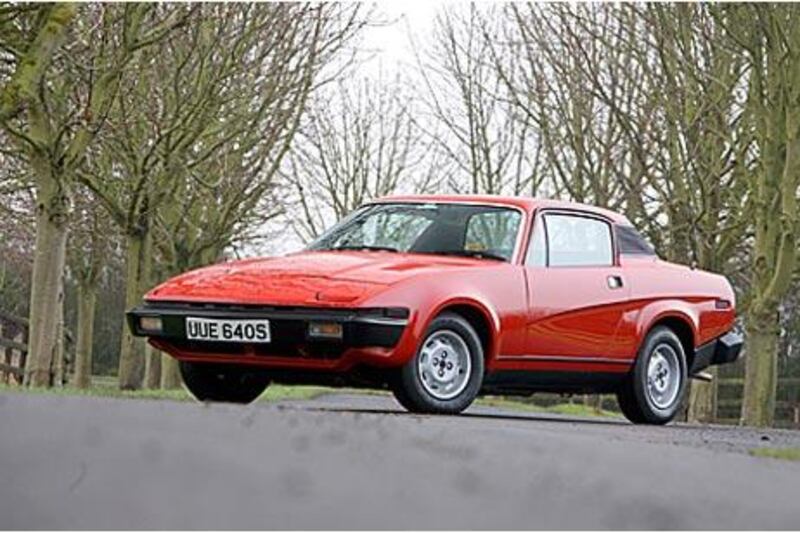Generally speaking, when drivers take possession of a new sports car, they don't expect it to promptly explode. However, in the mid 1970s, this was the unfortunate fate in store for many drivers of the latest model in Triumph's Italian-designed TR series, the TR7. Its penchant for pyrotechnics has become something of an urban legend, another anecdote used to explain the sad demise of the British car industry during that lacklustre decade.
While previous TRs had sleek, curvaceous lines, the 7 was an automotive doorstop with a distinctive wedge shape and ultra-modern, pop-up lights. But innovation in design didn't stretch to underneath the bonnet, where a sluggish, 94hp, inline four-cylinder engine was never going to produce "neck-jerking" performance. As with its compatriot, the MGB, the performance didn't match the promise. British Leyland did introduce a V8 engine in the last three years of production to make the TR8, which propelled it from 0-60 in less than eight seconds. This extra muscle made it a surprisingly successful American export. It was no longer too little but it ultimately proved to be too late.
The TR7, like many of its Leyland stablemates, was both a modern marvel and an anachronism, an example of British engineering innovation undermined by an inefficient, bureaucratic conglomeration struggling to satisfy the consumer market, compete with foreign imports and appease the apathy and anger of its workforce. On paper, it was a car before its time, incorporating independent suspension and disc brakes. It was also the first mass-produced car to have a moulded plastic dashboard. But the finished products that rolled off the production line were let down by Leyland's notoriously poor build quality. Reactive, blundering management didn't help either. A drop-top version, without doubt the most stylish and sought after model, was only belatedly introduced in 1980, too late to salvage the cars reputation and popularity.
In an attempt to promote its sporting calibre, it was entered into rally competitions in the late 1970s and performed creditably on tarmac, but proved uncompetitive off-road. In the end, the 7 and the historic TR line came to an abrupt end in 1981. A little more than 100,000 were made and some, those that have resisted the urge to auto- combust, can still be seen on roads in the UK and North America. Despite its faults, it retains the ability to turn heads, and its styling helped inspire a new generation of 1980s sports cars, from the Fiat X-1/9 to the Mazda MX-5.
For Triumph, that once-proud marque, the end was nigh, and after an ill-fated flirtation with Honda that spawned the best forgotten Acclaim, the badge was rendered redundant. It wasn't even deemed worthy of being stuck on the bonnet of a Metro or Maestro. MG, its age old adversary, was to be given that dubious honour. tbrooks@thenational.ae






